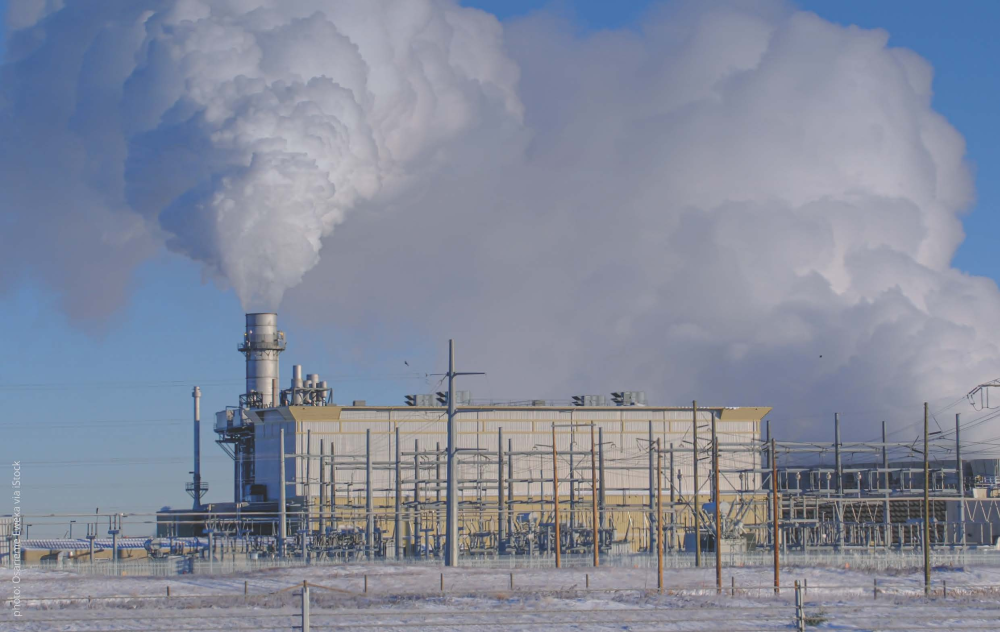CALGARY — This year’s international climate negotiations (COP28) is primarily focussing on achieving deep emissions cuts and tripling renewable energy capacity in an urgent attempt to limit global warming to 1.5°C.
Alberta is responsible for nearly half of Canada’s electricity emissions and lags the rest of the country in reducing its emissions profile. Our report finds that, despite already having enough existing and developing capacity to meet its needs through 2035, unabated gas assets are increasing in Alberta: 35% since 2020 with an additional 24% by 2025. Yet the International Energy Agency (IEA) expects unabated gas-fired generation will only need to be between 2% and 5% of the total electricity generation in G7 countries on a 2035 net-zero grid.
 Continuing to prioritize emissions-intensive energy sources and develop unabated gas is a major risk and out of step with global trends. As Canada – among the 196 nations participating in this year’s climate change negotiations – progresses towards a net-zero grid, many unabated gas-fired generating units won’t be able to compete with cost-effective wind, solar, and battery storage solutions. In the U.S. and Europe, existing unabated gas capacity is already more expensive to operate than building new renewables.
Continuing to prioritize emissions-intensive energy sources and develop unabated gas is a major risk and out of step with global trends. As Canada – among the 196 nations participating in this year’s climate change negotiations – progresses towards a net-zero grid, many unabated gas-fired generating units won’t be able to compete with cost-effective wind, solar, and battery storage solutions. In the U.S. and Europe, existing unabated gas capacity is already more expensive to operate than building new renewables.
As unabated gas plants become increasingly uncompetitive, and in the worst-case scenario, become stranded, ratepayers and taxpayers could end up paying for the unused grid infrastructure. Unless Alberta takes a different approach, the province’s dependency on an emissions intensive source of electricity will be locked in, putting Albertans at risk of covering unnecessary higher electricity costs while making it difficult for Alberta to achieve an affordable and reliable net-zero grid.
There remains a place on the grid for gas-fired electricity, but it must be abated – meaning any emissions are captured. Our research finds that a net-zero grid could include 1.8GW to 5.2GW of gas capacity with carbon capture and storage by 2035. Abated gas-fired electricity, along with other clean energy sources, will allow Alberta to achieve a diverse, affordable and reliable grid. And abatement projects are gaining momentum. There are currently five proposals for gas with carbon capture and storage in Alberta. It is critical that Alberta aligns itself with the rest of the world working towards reducing emissions – a key aspect of limiting global temperature increase to 1.5°C pre-industrial levels – and restrict the development of unabated gas-fired electricity in the province.
Quote
“Clean electricity is the backbone of a clean economy. To achieve a net-zero economy by 2050 it’s critical that we decarbonize the electricity sector by 2035. While gas-fired electricity can remain a part of a modernized, low-carbon electricity mix, emissions must be captured. But Alberta’s electricity sector related emissions are rising due to new investments in unabated gas-fired generation. This could cement the province’s dependency on an emissions intensive source of electricity. With carbon capture as an option in Alberta, there is no need for polluting, unabated gas on the grid.”
— Scott MacDougall, Director of Electricity, Pembina Institute
[30]
Visit the Pembina Institute’s website to download a copy of Grid-Locked: Risks of unabated gas-fired electricity for a clean grid in Alberta
Contact
Courtney Smith
Senior Communications Lead, Pembina Institute
647-797-9353
Background
Report: Grid-Locked: Risks of unabated gas-fired electricity for a clean grid in Alberta
Report: Zeroing In: Pathways to an affordable net-zero grid in Alberta




